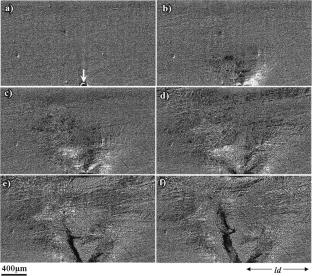Microscale drivers and mechanisms of fracture in post-processed additively manufactured Ti–6Al–4V
Abstract
Herein, we focus on understanding the microstructure-fracture correlations in a Ti–6Al–4V alloy additively manufactured via electron beam melting (EBM) and subjected to various post-process heat-treatments. Specifically, the as fabricated material is subjected to a sub-transus heat-treatment followed by air-cooling and a super-transus heat-treatment followed by either air- or furnace-cooling. Next, a series of in-situ single edge notch tension (SENT) tests are carried out under a high-resolution digital optical microscope. The panoramic high-resolution images captured during the in-situ tests are then used to characterize the planar deformation on the specimen surface using microstructure-based digital image correlation (DIC). The results of the in-situ SENT tests together with DIC and post-mortem fractographic analyses provided us with a better understanding of the microstructure-fracture correlations in these materials. Our results show that the fracture mechanism of the as fabricated and sub-transus heat-treated materials is essentially the same, while the changes in the microstructure following the super-transus heat-treatments significantly affects the fracture mechanism. In this case, several microcracks of hundreds of microns in length first nucleate away from the deformed notch following extreme plastic deformation at discrete locations. Furthermore, the location of these microcracks in the super-transus heat-treated materials is extremely sensitive to the details of the underlying microstructure.


 求助内容:
求助内容: 应助结果提醒方式:
应助结果提醒方式:


